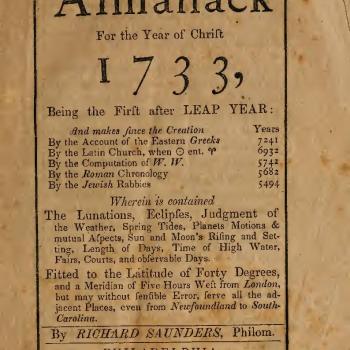
In 1733, Benjamin Franklin, using the pseudonym Richard Saunders, began publishing Poor Richard's Almanack, which included agricultural predictions, charts of the moon's phases, and a series of proverbs, such as "haste makes waste." Franklin, acknowledged as one of America's Founding Fathers, especially for his role as a statesman, continued to publish his Almanack until 1758.
Share some of the following proverbs taken from Poor Richard's Almanack with your students:
- There are no gains without pains.
- At the working man's house, hunger looks in but dares not enter.
- Industry pays debts while despair increases them.
- Plough deep while sluggards sleep and you shall have corn to sell and to keep.
- One today is worth two tomorrows.
- Have you something to do tomorrow? Do it today.
- Trouble springs from idleness and grievous toil from needless ease.
- The noblest question in the world is: What good may I do in it?
- Hear no ill of a friend, nor speak any of an enemy.
- Many a man thinks he is buying pleasure when he is really selling himself a slave to it.
Ask students to give their impressions of the person who would write these statements. Then, have students choose one saying, paraphrase it, and explain why they agree or disagree with its message. As a final activity, ask students to write their own mottos for life. These mottos can be illustrated and displayed in the classroom or made into bumper stickers or t-shirts.
This site pairs Franklin's quotes with a "translation" into verse. The quotes are arranged by topic and can also be searched through an index.
Gettysburg College offers electronic access to pages from the original Almanack. Additional pages are also available.
This webpage developed by PBS is part of their Benjamin Franklin resource. It offers information about Franklin's satirical writing style and the humor found in Poor Richard's Almanack.
While devoted to science and technology rather than reading per se, this institution promotes discovery and ongoing inquiry-the cornerstones of an inquiry-based classroom. Included is a list of resources for studying Franklin.

The onset of winter weather varies from year to year and from place to place, but December 21, the winter solstice, is considered the first official day of winter. The winter solstice marks the shortest day of the year. The days get longer as winter progresses. In the Northern Hemisphere, it also marks the day when the sun is furthest to the south.
Winter has long been immortalized in art, poetry, and song. For many of us, winter makes us think of frolicking on snowy days and reading by the fire on cold nights-even if we live in a warm place where it never snows! Brainstorm with your students about the words and images that come to mind when they think of winter. How do these words and images compare to their own experiences with winter weather? Have students select and read a picture book about winter. How do the words and images in the book compare to the list they brainstormed and to their own experiences? Students can use the interactive Venn Diagram to make the comparison.
As students read, ask them to look for examples of winter activities that the characters do with their families or friends. Were there any winter traditions on the list students brainstormed? Challenge your students to celebrate what winter means to them by starting their own tradition on the first day of winter. Students can use the interactive Postcard Creator to write to family and friends, inviting them to participate in the new tradition.
This page from American Memory at the Library of Congress celebrates the winter solstice through images and anecdotes of winters past, drawn from American literature and folk history.
This National Geographic News article discusses the winter solstice and ancient celebrations associated with it.
Reading Rockets provides this annotated list of books about winter for children.
While snowy weather can be fun, severe winter storms can be dangerous. Scholastic offers this resource featuring information about winter storms, eyewitness accounts of winter storms, and associated vocabulary.
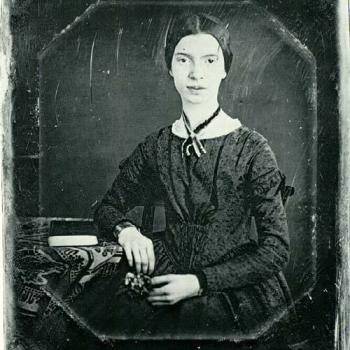
Emily Dickinson wrote nearly 1700 poems, though fewer than 10 were published in her lifetime. Her style, consisting of unorthodox phrasing, imagery, syntax, and capitalization, was considered too radical at the time she wrote. Today, Dickinson's work is considered among the greatest in American literature.
Use one of Dickinson's most famous poems, "This Is My Letter To The World", for a classroom activity on how audience affects voice.
Discuss the poem with your students, focusing on the idea that the speaker was writing to a "world" that did not care about him or her and that he or she wanted to be treated gently. Ask students to imagine themselves stranded on a desert island for 10 years. Have them use the ReadWriteThink Letter Generator to write two letters to send off the island in two separate bottles. One letter should be addressed and written to someone they know and care about. The second letter should be addressed and written to the world at large (i.e., no one person in particular). See the Letter Generator page for more information about this tool.
After this exercise, students should consider how much of their writing depended on the audience. Have them examine word choice, subject, and tone in each letter.
This website offers a remarkable collection of poetry, scholarly articles, and classroom activities dedicated to Dickinson's work. The site also links to similar resources for the poetry of Walt Whitman.
Included on the Poets.org website, this page includes a student-friendly biographical entry about Dickinson, a few of her poems, and links to other related websites.
The University of Virgina offers the text of numerous Dickinson poems. Brief biographical information about Dickinson is also included.
The Emily Dickinson Museum offers a brief look at Dickinson's biography.
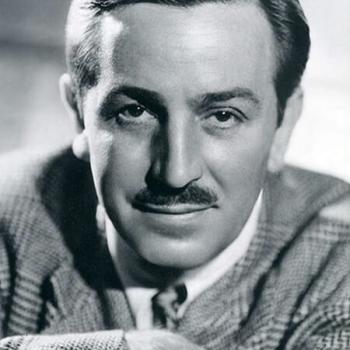
Some of Walt Disney's best-known work is in the adaptation of popular fairy tales like Cinderella, Snow White, and The Little Mermaid. Over time, people have criticized these works for their treatment of the female gender, saying the "Disney Princesses" in particular are stereotyped as weak and dependent upon their male protectors. Still, Disney movies have become classics in the world of movies and home video.
Disney movies provide an easy exercise for examining gender representations and cultural stereotypes in film and media.
Begin by asking your class to list all the Disney films that they have seen. Then, have students make lists of the female characters from these films. Divide the class into small groups, and assign two or three of these characters to each group. Then, ask them to describe their assigned characters. For this description, they should consider:
- What are their physical attributes?
- How do they relate to the male characters in the movie?
- What do they seem to want out of life?
- Do they seem realistic?
After the groups discuss their characters, generate a class list of characteristics. Using this list, have students write a thesis statement that begins, "The female characters in Disney films are generally ...." You may want your students to continue writing this piece as a paragraph or as a full essay.
This comprehensive resource includes annotated fairy tales, including their histories, similar tales across cultures, and over 1,200 illustrations.
This article discusses a study of gender in Grimm fairy tales by Purdue professors, with extensive quotes from their research.
This resource examines racial and cultural stereotyping in some of Disney's most popular movies. The site is part of a tutorial for undergraduate students, but can easily be adapted for use by middle and secondary students as well.
This website provides information about Walt Disney, Disney art and artists, Disney's friends and family, and more. A link to an interactive timeline walks you through the important moments of Walt Disney's life and other historical events that took place during his lifetime.
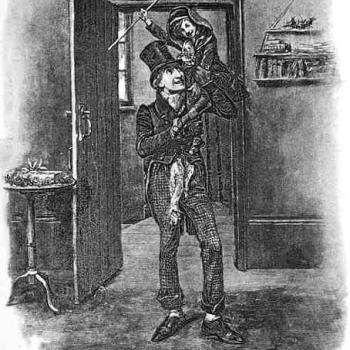
Charles Dickens wrote A Christmas Carol as a "potboiler," or an inferior work done purely for quick profit. Unfortunately, while the book was an instant success and remains one of his best-known works, Dickens made little profit because people purchased pirated editions. There were no copyright laws at that time in England.
Chances are, your students have either seen or will be seeing a production of A Christmas Carol in December. What a perfect time for a collaborative project for middle school and primary students!
Have a middle school English class or the drama club write a script for A Christmas Carol on a level that primary students can read and perform. Involve students in home and career classes to create the costumes and scenery for the production. Invite film students to record the performance and have computer students create a website showcasing photographs from the project.
This online resource from PBS provides information about the life and career of Dickens.
Since 2002, Stanford University has encouraged community reading and discussion of Dickens' novels through the serial release of his major works. Biographical and historical context information is included with each serial publication.
This webpage includes hundreds of links to primary and secondary documents on various aspects of Dickens' life and work.
This page from The Victorian Web provides extensive links to Dickens' biography, chronology, a list of works, an introduction, and other relevant essays.
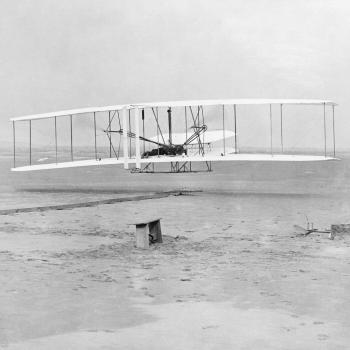
Wilbur and Orville Wright's landmark flight at Kitty Hawk, North Carolina, was the realization of their dream of powered human flight. Although their historic achievement lasted only 12 seconds, it continues to symbolize—even after more than 100 years—human determination, imagination, creativity, and invention.
The anniversary of the Wright brothers' amazing flight offers a great opportunity for a highly motivational learning experience. After your students learn about the Wright brothers, have an anniversary party to showcase their creative work. Remember to include a cake in the shape of an airplane!
In addition, the following activities for elementary school students can be used as extensions to the lesson plans listed below:
- Students can create a multimedia timeline presentation on the lives of the Wright brothers or on aviation over the last 100 years.
- Ask students to compare the Wright Flyer, which Wilbur and Orville flew, with the planes we have today. Have them imagine what airplanes will be like 100 years from now and design or illustrate a future model.
This website provides information about the Wright brothers' development of the first powered aircraft; included are interactive experiments, an electronic field trip, and information on the restoration of the Wright Flyer.
The Franklin Institute provides an excellent multimedia resource for students interested in learning more about the Wright brothers and seeing film clips of early flights.
This page from Scholastic celebrates 100 years of flight with a biography of the Wright brothers, information on how they invented their plane, and an activity that walks you through making some of the decisions you'd have to make to build your own plane.
NASA provides this site for kids, which includes information about the history of flight, how flight works, and how jet engines work. Also included is an interactive game about the Wright brothers.
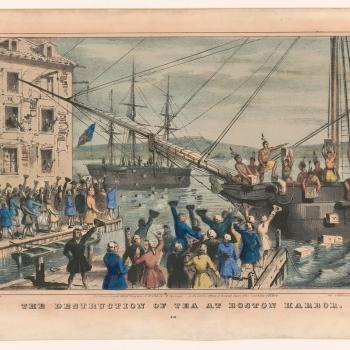
Over two hundred years ago, a group of activist colonists disguised themselves as Native Americans and dumped tea into the Boston Harbor.
"High Tea in Boston Harbor" was the headline of the Boston Gazette.
After reading the headline of the Boston Gazette aloud (above), ask your students to create a political cartoon for this event. Political cartoonists demonstrate a particular point of view in their cartoons. Students may decide to create their cartoons from the perspective of one of the colonists, King George III, or a fish in the Boston Harbor!
Invite students to use the interactive Comic Creator to create their political cartoons and then have students share their cartoons with the class. Ask the class to identify the cartoonist's point of view. Visit the Comic Creator tool page for more information about this tool.
Make copies of the student-generated political cartoons and distribute them to small groups of students. Have each group of students work collaboratively to develop higher-level response questions for the political cartoons.
Primary students will enjoy this resource created by fifth-grade students.
Presented by PBS, this educational website chronicles the American Revolution. To assess learning, ask your students to play "The Road to Revolution," an interactive game about the revolution.
At this page on the Kidport Reference Library website, students can learn about the events leading to the Boston Tea Party and access links to related information.

On this day in 1967, Dr. Christian N. Bernard performed the first human heart transplant. He also developed a new design for artificial heart valves.
Chances are, every student in your class will know someone who has had heart problems. After discussing the causes of heart disease, talk about the role that diet and exercise can play in maintaining a healthy heart. Ask your students to go online and find healthy dessert recipes that do not involve cooking or to bring in magazines from home that include recipes for healthy desserts. You can also provide access to kid-friendly cookbooks, such as the Kids' Cookbook: All Recipes Made by Real Kids in Real Kitchens! (American Heart Association, 1993). After sharing their recipes, have students vote on which dessert will be made in class. Before eating the dessert, take your students on a brisk walk outdoors. If it's a rainy day, do some indoor aerobics to their favorite music.
The Franklin Institute Online provides an interactive, multimedia learning experience about the heart. Visitors can hear the sound of a heart murmur, see photographs of the human heart, watch an echocardiography and open-heart surgery video, and learn how to monitor their hearts' health!
On this website developed by NOVA Online, visitors have the opportunity to perform a virtual heart transplant. After the operation, students will have a pretty good idea of how surgeons perform heart transplants.
Research has shown that heart disease begins in childhood. Parents, teachers, and students will benefit from the information on this website.
The American Heart Association offers dozens of lesson plans, activities, and other resources for teaching about heart health.
This lesson plan from ScienceNetlinks has students examine changes in diet and lifestyle from prehistoric to modern times and how these differences have spurred the development (and better treatment) of heart disease.
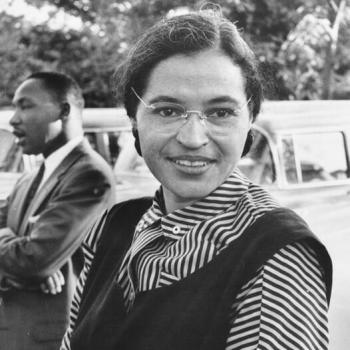
On her bus ride home from work on December 1, 1955, Rosa Parks sat in the first row of the "colored section." The bus was crowded, and when asked to give up her seat for a white person, she refused and was arrested.
Parks died on October 24, 2005 at her home in Detroit.
Rosa Parks clearly broke the law when she refused to give up her seat on the bus for a white person. As educators, we teach citizenship to students. Laws are made to benefit society and should be followed by all. In the case of Parks, your students will likely agree that the law was unjust and her actions were justified.
Ask your students to make believe that the year is 1955 and they just heard about the arrest of Parks. Invite them to write newspaper editorials explaining their points of view about the current segregation laws in Montgomery, Alabama.
Students can visit the Scholastic website to find interesting and easy-to-read information about Rosa Parks, including an interview with her.
Read an interview with Rosa Parks courtesy of the Academy of Achievement.
Tolerance.org offers educators a free curriculum kit for the classroom that revisits this familiar historical event. The kit includes a teaching guide, with classroom activities tied to the story of Rosa Parks.
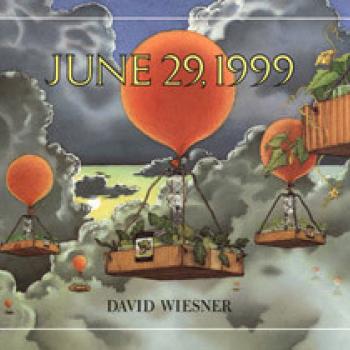
In June 29, 1999, main character Holly Evans undertakes a scientific project that appears to have gigantic results when huge vegetables begin landing on the planet. Yet she's still not sure where the vegetables all came from.
David Wiesner, author of June 29, 1999 (Houghton Mifflin, 1992) and two-time Caldecott Award winner, composes humorous books with delightful illustrations that surprise the reader. In fact, in June 29, 1999, Wiesner's illustrations are indicative of the emotions of the various story characters: people are delighted, surprised, and, in some cases, curious. Such illustrations provide an excellent opportunity for discussion of feelings and how they are expressed wordlessly through the talent of the illustrator. Explore the pictures in Wiesner's book carefully and identify elements that make the emotions in the story obvious to someone reading the book. Your students might then create lists of words and their own illustrations to express the feelings portrayed.
If you're looking for information on Wiesner's books, his biography, and related resources, this Houghton Mifflin site is for you. It even includes illustrations and notes on Wiesner's creative process.
Focusing on Wiesner's Caldecott Medal–winning book, this series of classroom activities includes comparing Wiesner's book to other versions of the three pigs story as well as links to a Kidspiration story map and additional resources.
This site provides recommended wordless picture books for children.